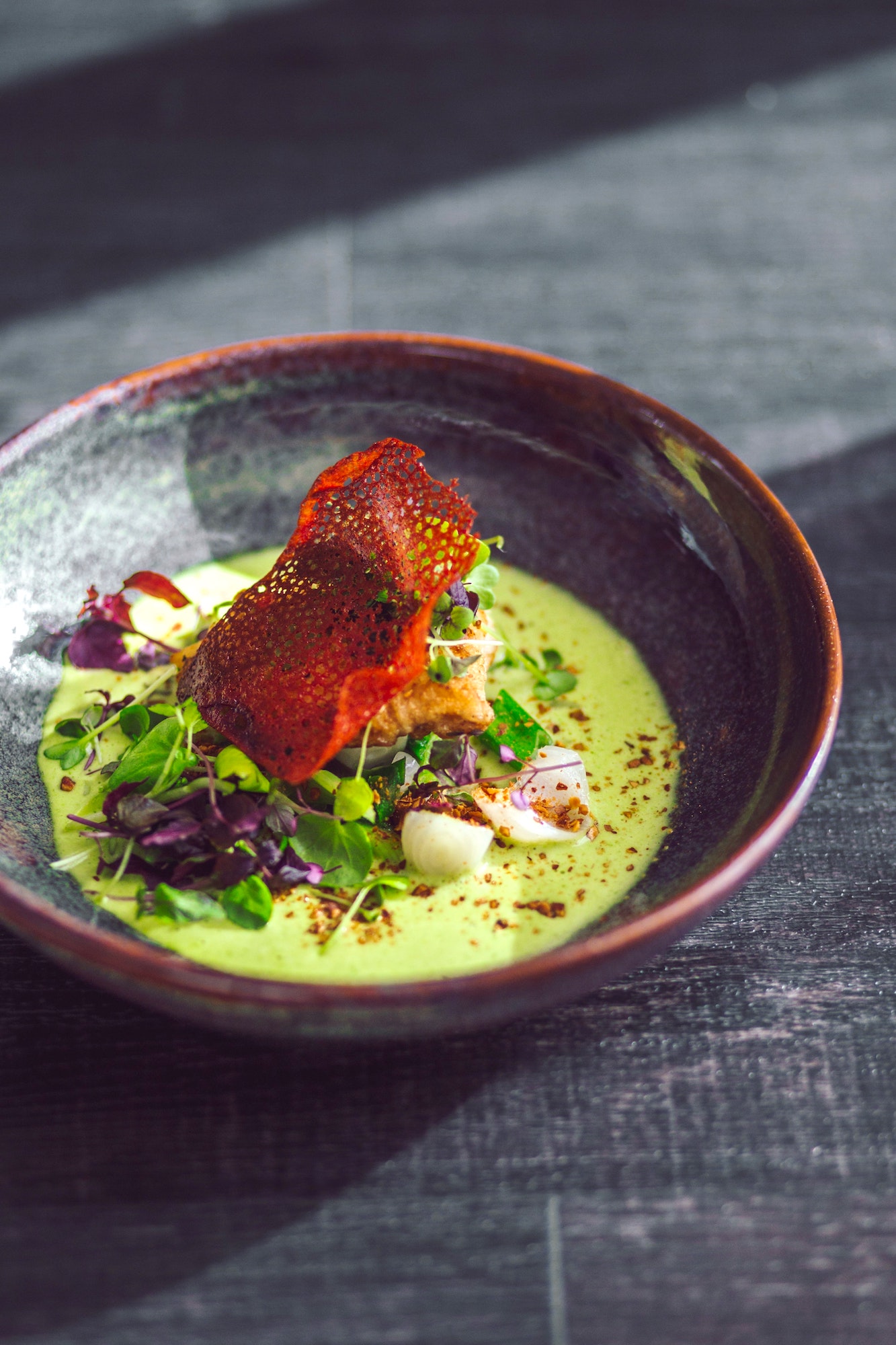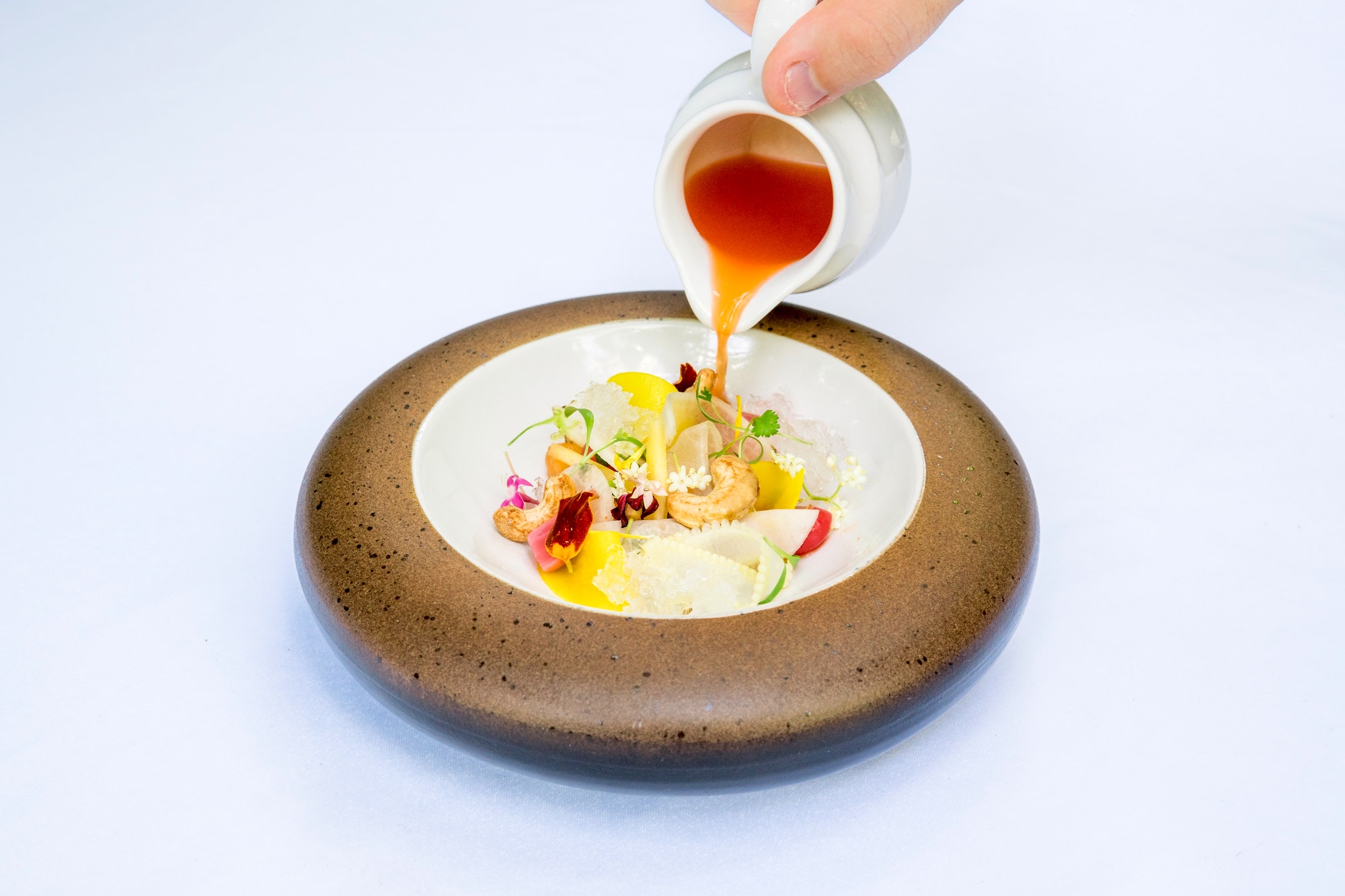What is fine dining?
Traditionally it would be defined as a restaurant that has a formal atmosphere, is almost always a sit-down restaurant with a well-trained service staff, crisp white tablecloths, and a menu that focuses on technique using the best produce one can find. You will find crystal glasses and five sets of impeccably polished cutlery on the table. These are restaurants that keep curated wine lists—and sometimes, even sommeliers. They have a strict dress code and typically have words such as escargot, carpaccio, foie gras, truffles, and lobster on the menu.
If we use this traditional definition, then we will find that Manila has been limited in its offerings. We have not really had many independent fine-dining establishments in this country. I have been traveling to Manila for the past 16 years, and finding a “fine-dining” establishment has been very difficult and limited to five-star international hotels. Even then, many of those establishments have been well below par when it comes to the rest of the world. Why? Well, one of the big problems is that they focus on ingredients that are not available locally, like Dover sole, sea bass, truffle, fine de claire oysters, and king crab—food items that are delivered frozen or flown in at crazy prices and average quality.
So, can we say that fine dining in the metro is dead? Not really, because we never really had a taste of the real thing. But is there still space in today’s food scene for it? Yes, but it comes with many risks.
So, can we say that fine dining in the metro is dead? Not really, because we never really had a taste of the real thing. But is there still space in today’s food scene for it? Yes, but it comes with many risks.
For one, the target market is limited to top business personalities and business meetings, politicians, high-end celebrations, and one-off, need-to-impress romantic dates. The dynamics of the restaurant industry make it very difficult for any fine dining establishment to survive. And that’s the reason why fine dining around the world is revolutionized, reinvented, and reinterpreted. The same is already happening in Manila.
The new consumer is allergic to stuffy environments, overpriced meals, and honestly, anything traditional. Consequently, many Michelin restaurant chefs have now opened bistros and brassieres. Why? Because their top-end restaurants just do not make enough money. Their signature establishments may put them on the map, but it is their casual-dining restaurants that finance and run them.

Taking notice of this, the hotels are adjusting. Take Shangri-La at the Fort’s case, for instance. They have evolved with the times by bringing in a more relaxed fine dining experience—a new wave of what is happening internationally—which has been extremely well received by Manila’s diners. To complement their offerings, they have also opened bistros, a fast-casual style of spin-offs for their signature establishments. This is very well represented by their Raging Bull Chophouse and Bar and Raging Bull Burgers.
The strength of hotels is that they have the finances of a big chain backing them up, whereas independent establishments need to survive on their own. How do they do it? Sala has Sala Bistro, Gallery VASK has VASK Tapas Room (which has now transformed into Gallery by Chele), Antonio’s has Breakfast at Antonio’s, and Mecha Uma has Ooma. Do you see a trend? The fine dining market is limited, therefore these restaurants have utilized their brand strength to create other establishments that are more casual and that appeal to the average diner.
So let’s go back to our question: Is fine dining dead? No, the term is changing and it is changing for the better, as the death of degustation has spurred exciting and more approachable concepts. Give it another 10 years and the old definition will be back with a vengeance.
Originally published in F&B Report Vol. 14 No. 5





